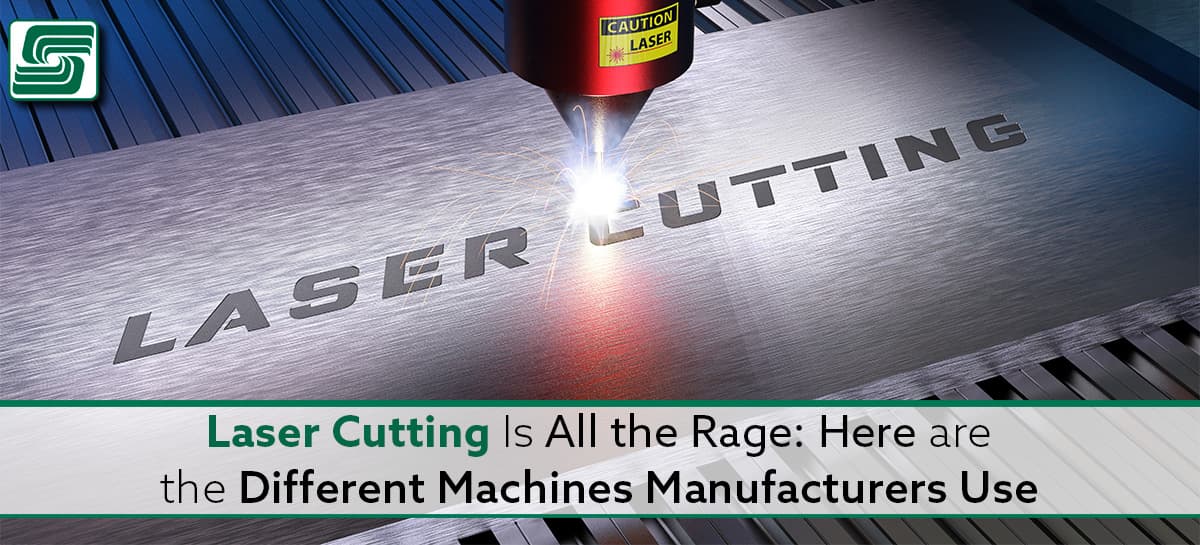
Laser cutting is a computer-controlled manufacturing process that produces extremely high-resolution cuts on metal, plastic, or other materials.
Rather than using a whirring blade like an old sewing machine, laser cutters use a beam of concentrated light to melt away layers of material. While the popularity of laser cutting has increased over time, it's not necessarily a new technology.
In fact, laser cutting first appeared in the 1980s as an alternative to traditional subtractive processes. Even though it's been around for some time, manufacturers have renewed interest in the technology and understanding limitations when evaluating your business needs and capabilities because of its advantages.
What is Laser Cutting?
A high-powered laser diode produces the concentrated beam of light used in laser cutting in a process called photolithography. In photolithography, a computer directs the path of the laser beam as it traces a pattern on a photomask.
The mask then directs the path of the laser beam as it traces a cutting pattern on the material. Today’s laser cutters employ various techniques to create patterns used to cut, etch and mark different materials, including fiber laser cutting, CO2 laser cutting, Nd: YAG laser cutting, CO lasers, and gas lasers.
Laser Cutting vs. Laser Marking
First, let's distinguish laser cutting from laser marking. These are both types of laser processes but have different applications used for different applications.
- Laser cutting: A process that uses a laser to remove pieces of material to create holes or patterns in metal or other materials.
- Laser marking: A slower process using a laser to create an electrochemical reaction on the surface of a material to create patterns and characters used for marking materials such as paper, plastic, or metal.
Manual laser cutting
Manual laser cutting is a method of fabricating a part from a CAD file by making a series of precise cuts on thin materials. Manual laser cutting is a viable option for low-volume, short-run production often used when prototyping parts and creating small batches of finished goods. Manual laser cutting is often used to create custom products that would be difficult and costly to manufacture using another method, such as architectural signage, custom wall coverings, handbags, and other products that require ornate designs and intricate cuts.
Automated laser cutting
Automated laser cutting involves using computer-controlled laser cutters that fabricate large numbers of identical parts from computer-generated CAD files. Automated laser cutting works on thick materials with high-density parts. Companies often use automated laser cutting for the high-volume production of custom products such as medical equipment, food packaging, and other products that require precise, large-scale production.
CO2 laser cutting
CO2 laser cutting uses a CO2 laser to cut through thick materials with high reflectivities, such as stainless steel, carbon steel, and nonferrous metals. CO2 laser cutting is used to cut large metal sheets in architectural applications, such as sign frames.
Pros of Laser Cutting
Laser cutting has several advantages that make it a good choice for many manufacturing applications:
- Versatility: Laser cutting allows you to create parts from various metals.
- Accuracy: Laser cutters offer high-resolution cuts that create intricate designs.
- Speed: Compared to other fabrication methods, laser cutting is faster.
- Low cost: Laser cutting is inexpensive performed and in low quantities.
- Cleanliness: Unlike other fabrication methods, laser cutting doesn’t create a lot of dust.
- Environment: Laser cutting creates little noise and doesn’t produce harmful fumes compared to other fabrication methods.
Cons of Laser Cutting
While laser cutting has many advantages, there are also limitations to manufacturing. These limitations include the following:
- Thickness limitations: Laser cutting has a limited ability to cut through thick materials compared to other fabrication methods.
- Material limitations: Laser cutting is limited to a variety of steel.
- Complex geometry limitations: Laser cutting is limited when creating intricate parts with lots of geometry, such as organic shapes and internal features.
- Branding limitations: Laser cutting can’t create unique finishes for branding a product with a unique look and feel.
- Design limitations: the part's design limits laser cutting.
In Sum
Laser cutting is a popular fabrication method for creating parts from various metals. It offers high-resolution cuts performed quickly and inexpensively for low quantities, creating parts with a clean finish with little dust.
Unlike other fabrication methods, laser cutting doesn’t create harmful fumes. When comparing laser cutting to other fabrication methods, remember that laser cutting has a limited ability to cut through thick materials and has limitations with creating intricate parts with lots of geometry.